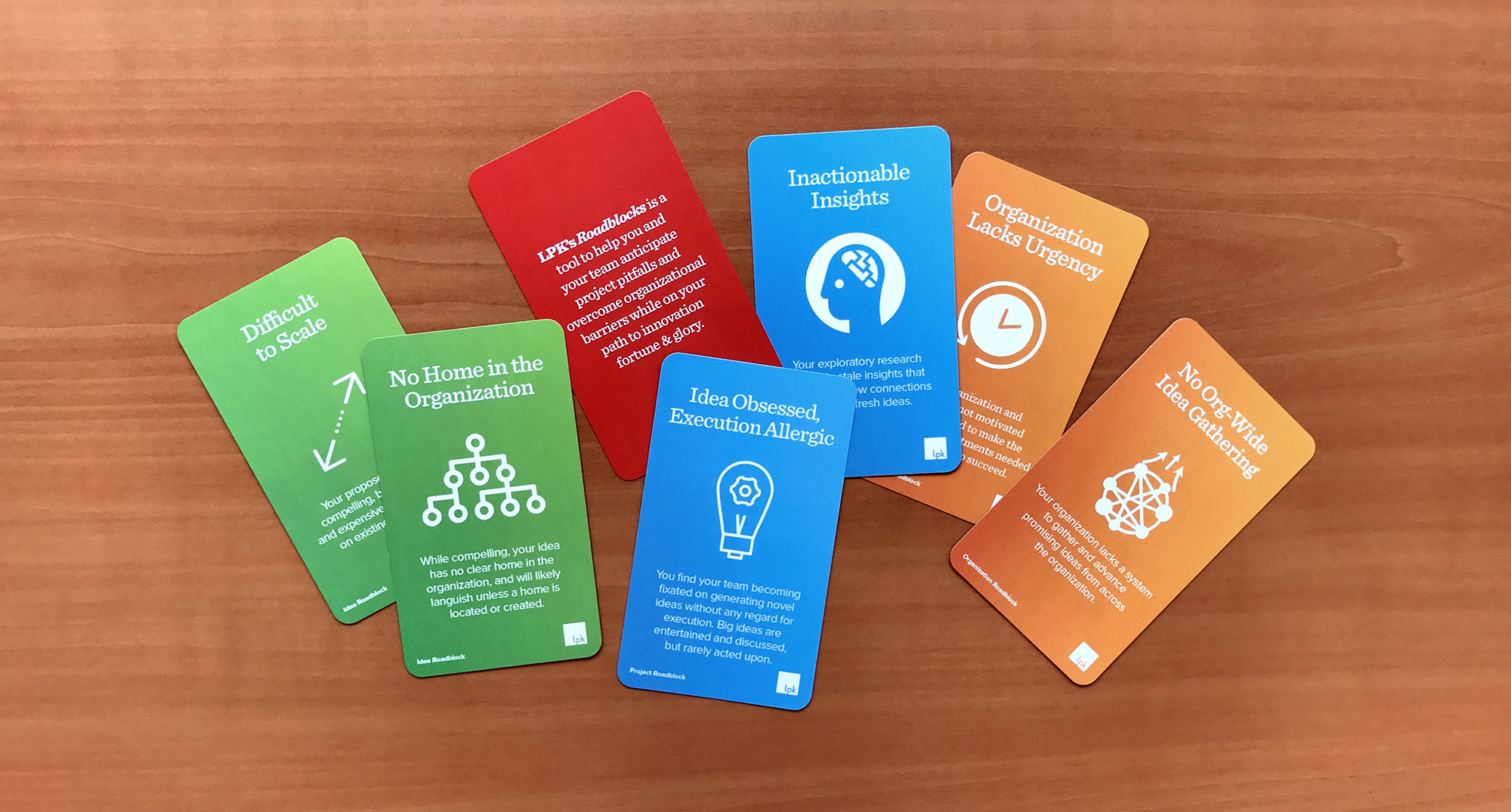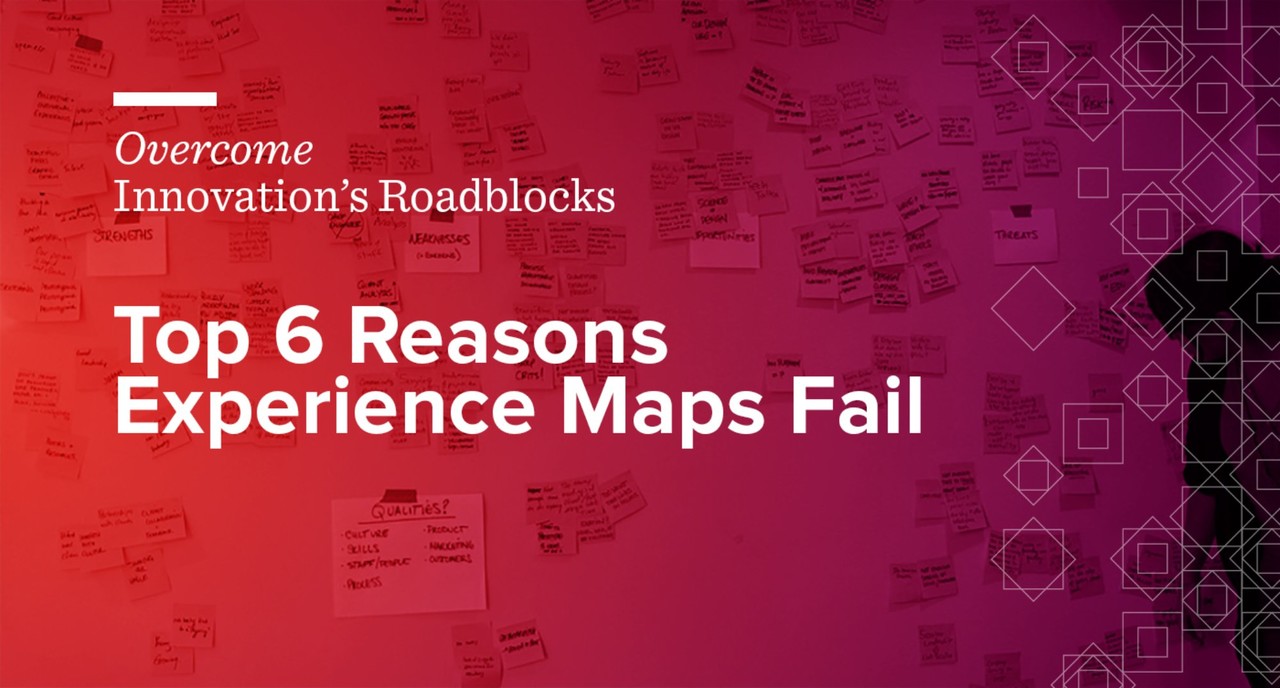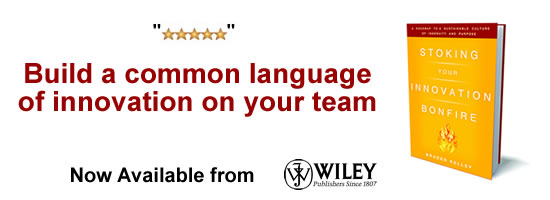Top 6 Reasons Why Customer Experience Mapping Efforts Fail
Before we can talk about how to improve customer experience maps, let’s start with a definition.
Customer Experience Map:
- A large, colorful chart that impresses leadership for a few weeks and then gathers dust in the corner.
- A complex visualization that requires a user manual in order to identify anything productive.
- A user-centered process that, once completed, leaves teams too exhausted to take further action.
All joking aside, organizations are hungry for growth, and experience maps are a great way to identify opportunities to increase top-line revenue. But if you’ve ever mapped your brand’s customer experience, you know this tool could be improved.
Here are 6 Roadblocks that stand in the way of successful customer-experience work and the growth opportunities it hopes to uncover.

- Organization Lacks Urgency. People are not motivated or incentivized to make the changes needed for an innovation to succeed. Often the experience-design team toils away for months, only for senior stakeholders to admire the artifact but ultimately provide little more than lip service to the final product.
- No Organization-Wide Idea Gathering. Once the experience is mapped, the team lacks a system to gather and advance promising ideas from across the organization. Often, ownership of experience-mapping efforts is delegated too far down into one function, lacking the visibility needed to engage a broad audience for serious activation.
- Inactionable Insights. Exploratory research often results in stale insights that fail to make new connections or inspire fresh ideas. There’s nothing worse than to be drawn in by an impressive-looking experience map, only to find there is nothing new to learn from it.
- Idea Obsessed, Execution Allergic. Some project teams are so fixated on the artifacts of the experience-mapping process that they lose sight of their ultimate growth objectives. Teams may entertain and discuss many ideas, but rarely act on any of them.
- No Home in the Organization. If ownership of the customer experience has no clear home in the organization, it will likely languish. In this case, different functions may map their own version of the experience, but they are often disconnected from the rest of the organization and irrelevant to other groups.
- Difficult to Scale. Many organizations recognize the value of experience mapping, but find it difficult and expensive to initiate based on existing capabilities. For teams that need short-term wins, creating a comprehensive experience map can seem daunting and inefficient.
We think there’s a better way to map the customer experience—a more scalable and shareable tool that increases the pace of innovation and delivers both short-term wins and long-term growth.
Interested in receiving the full set of LPK’s Roadblocks to Innovation cards and sharing feedback? Visit www.lpk.com/roadblocks
Wait! Before you go…
Choose how you want the latest innovation content delivered to you:
- Daily — RSS Feed — Email — Twitter — Facebook — Linkedin Today
- Weekly — Email Newsletter — Free Magazine — Linkedin Group
 Nicholas Partridge is senior innovation director at LPK and he’s obsessed with creating “the newâ€: be it product, service, brand or experience. Nick is a veteran innovator, having partnered with the world’s most powerful brands and scrappy upstarts on their hairiest innovation challenges. Prior to LPK, he served as co-head of Idea Couture (NYC), as innovation director at Fahrenheit 212 (NYC) and as industrial designer at Essential (Boston). On Twitter at @KnewNewNeu.
Nicholas Partridge is senior innovation director at LPK and he’s obsessed with creating “the newâ€: be it product, service, brand or experience. Nick is a veteran innovator, having partnered with the world’s most powerful brands and scrappy upstarts on their hairiest innovation challenges. Prior to LPK, he served as co-head of Idea Couture (NYC), as innovation director at Fahrenheit 212 (NYC) and as industrial designer at Essential (Boston). On Twitter at @KnewNewNeu.
NEVER MISS ANOTHER NEWSLETTER!
LATEST BLOGS
Three things you didn’t know about credit cards
Photo by Ales Nesetril on Unsplash Many of us use credit cards regularly. From using them for everyday purchases to…
Read MoreFive CV skills of a business-minded individual
Photo by Scott Graham on Unsplash The skills listed on a CV help employers quickly understand your suitability for a…
Read More



